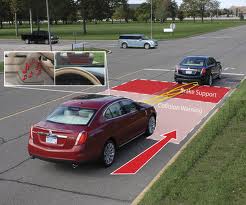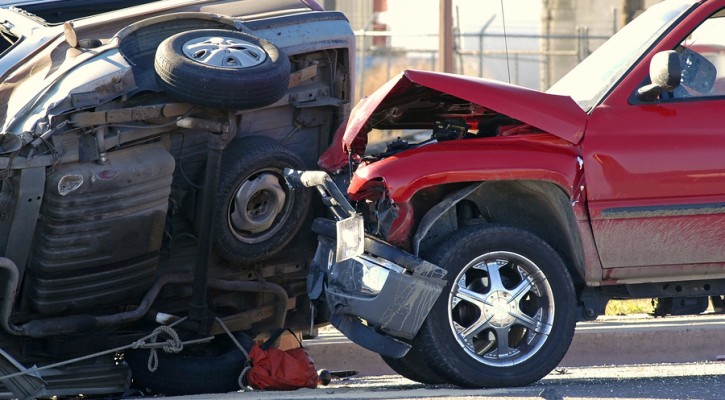Tag Archive: NHTSA

Automatic Emergency Braking To Become Standard On Most Vehicles
October 5, 2015
Ten automobile manufacturers have committed to making automatic emergency braking (AEB) standard equipment in all cars manufactured for the US and Canadian market according to a joint announcement by the National Highway Traffic Safety Administration (NHTSA), the US Department of Transportation (DOT), and the Insurance Institute for Highway Safety (IIHS).
Automatic emergency braking uses sensors such as lasers, cameras, radar, or sonar to detect an imminent crash. The system gives the driver a warning and, if the driver doesn’t take action in time, the system will automatically apply braking to avoid the crash. An IIHS study reported that the technology could reduce insurance injury claims by as much as 35 percent.
The system has been offered by several manufacturers over the past several years but only as an option on their high end models. The ten manufacturers who agreed to make the system standard equipment on all models are; Audi, BMW, Ford, General Motors, Mazda, Mercedes-Benz, Tesla, Toyota, Volkswagen and Volvo. Those manufacturers represent 57 percent of the light duty model vehicles produced in the US each year. The automakers have agreed to work with NHTSA and IIHS over the next few months to agree on the details and a start date for implementation of the program.
The act of voluntarily agreeing to make new safety technology standard equipment is unprecedented in the auto industry. Normally, NHTSA suggests standardization of a system and, with the automakers kicking and screaming the whole way, congress then has to pass a law making it required equipment. Two things are happening to change the way things are done between the federal government and the auto industry.
In 2013, IIHS added automatic braking systems to the requirements for a vehicle to earn the designation as a “Top Safety Pick +” in its annual list of safest cars. In January of this year, NHTSA announced that it was adding automatic emergency braking to its “wish list” of required safety equipment on new cars.
By voluntarily agreeing to add automatic emergency braking to their list of standard equipment, the automakers avoid the hassles of dealing with government regulators and remain in charge of the process. Also, as more and more buyers look at the IIHS safety ratings as part of the decision process when selecting a new car, adding automatic emergency braking will also help them get the highly coveted “Top Safety +” designation.

Collision Avoidance Systems Should Be Standard Equipment On All Vehicles: NTSB
June 12, 2015
Collision avoidance systems should be standard equipment on all new vehicles according to a new report issued by the National Transportation Safety Board (NTSB). The NTSB is the federal agency whose job is to investigate transportation crashes of all types; aircraft, train, ship, bus, or truck. The report came about as a result of the investigation of just nine rear end motor vehicle crashes involving 48 vehicles that resulted in 28 deaths and 90 injuries.
In the US, rear end crashes are the most common type of crash involving two or more vehicles. According to the NTSB report, rear end crashes make up almost half of all motor vehicle crashes involving two or more vehicles. In the years 2011 and 2012, rear end crashes resulted in the deaths of 3,491 people and more than a million injuries. In 2012 alone, there were more than 1.7 million rear end crashes.
There are several reasons for rear end collisions including; driver distraction, false expectations of of driver intent, unsafe speed, and fatigue. However, the most common reason, according to the National Highway Transportation Safety Administration (NHTSA) is driver distraction. According to NHTSA, 87 percent of rear end crashes are due to driver distraction.
Several different types of collision prevention systems have been available over the past 20 years including;
- Collision warning systems (CWS) that alerted a driver to the possibility of a collision.
- Adaptive cruise control (ACC) that automatically maintains a safe following distance between vehicles ahead.
Both the CWS and ACC systems are passive systems that still required the driver to take action to avoid a rear end crash but the driver may not react in time.
The latest version, known as the collision avoidance system (CAS) combines the CWS and ACC into an active system that takes control of the vehicle to avoid a crash. If the CAS system senses a probable crash, it will automatically apply the brakes in time to avoid the crash. The CAS system can respond much faster than the human driver.
Using the data from the 2011 and 2012 crash database, the NTSB estimated that the use of a collision avoidance system could have saved up to 2,220 lives. They also estimated that injuries could have been avoided or reduced in 93.7 percent of those crashes.
Collision avoidance systems are already available in a few high end model cars. The NTSB is making the following recommendations regarding collision avoidance systems:
- For manufacturers to install forward collision avoidance systems as standard features on all newly manufactured passenger and commercial motor vehicles,
- For NHTSA to expand the New Car Assessment Program to include a graded rating to assess the performance of forward collision avoidance systems, and
- For NHTSA to expand or develop protocols for the assessment of forward collision avoidance systems in passenger and commercial vehicles.
Read more: Safety Shouldn’t Be a Luxury Feature
